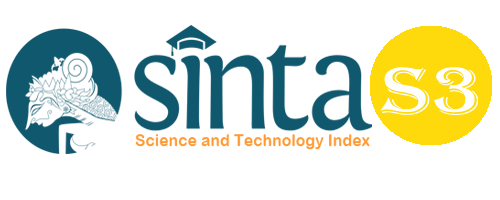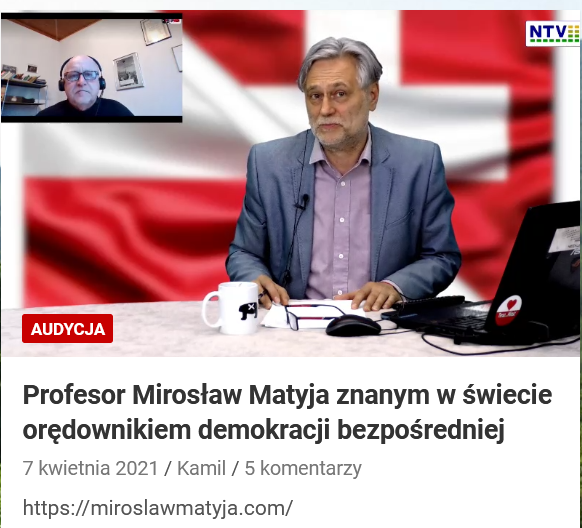Blended Learning Model (BLM) in English Pronunciation Class: Lesson from Indonesia
Abstract
Blended Learning Model (BLM) has frequently been viewed as one of the most effective models in teaching. Many studies have been conducted to reveal the effectiveness of BLM to teach various subjects, yet very few previous studies touched the use of BLM to teach English pronunciation. This research aimed at filling the gap describing how English pronunciation teacher put into practice the BLM in pronunciation instruction and what the students’ responses toward this model. This research used qualitative research method and employed field notes observation, a set of questionnaires, and semi-structured interview as the instruments. The research participants were 29 students from English education study program at teacher training institute at STKIP PGRI Sidoarjo, East java, Indonesia. The result showed that BLM was employed through three related stages in pronunciation class; online materials, the online tutor, and the face-to-face teacher. Additionally, BLM increased students’ interests and motivation to learn pronunciation. These results can be viewed as a source of perspective points while teaching pronunciation skill in EFL setting.
Keywords
Full Text:
PDFReferences
Adams, A., & Timmins, F. (2006). Students' Views of Integrating Web-based Learning Technology into the Nursing Curriculum- a descrptive Survey. Nurse Educ. Pract., 6(1), 12-21.
Akbarov, A., Gonem, K, Aydogan, H. (2018). Students' Attitude toward Blended Learning in EFL Context. Acta Didact. Napoc, 11(1), 61-68.
Alsalhi, N.R., Eltahir, M.E.,& Al-Qataweh, S.S. (2019). The Effect of Blended Learning on the Acievement of ninth Grade Students in Science and Their Attitueds towards its Use. Heliyon, 5(9), e02424.
Backla, A. (2018). Learner-Generated Materials un a Flipped Pronunication Class: A Sequential Explanatory Mixed-Methods Study. Elsevier, 14-38. www.elsevier.com/locate/compedu:14-38.
Bart, M. (2014). Survey Conforms Growth of the Flipped Classroom. In B. (Ed), Blended and Flipped: Exploring New Models for Effective Teaching and Learning (p. 18). Madison: WI: Magna Publication.
Basturkman, H. (2002). Negociating Meaning in Seminar-Type Discussion and EAP. English for Specific Purposes, 21(3), 233-242.
Bell, T. (2015). The Flipped German Classroom. In A. Moeller, Proceedings of Central States Conference on the Teaching of Foreign Languages (pp. 17-38). Richmond: VA: Presented at the Central States Conference on the Language Teaching of Foreign languages.
Bennett, B. (2011). The Flipped Class Manifest. Retrived from http://www.thedailyreiff.com/articles/theflipped-class-manifest-823.php.
Bliuc, A., Goodyear., & Ellis, R. (2007). Research Focus and Methodological Choices in Studies into Students' Experiennces of Blended Learning in Higher Education. Internet and Higher Education, 10, 231-244.
Burch, K. (n.d.). Center for Teaching and Learning. http://ctl.centre.edu/flipped-classroom.html.
Butt, A. (2014). Students' Views on the Use of a Flipped Classroom Approach: Evidence from Australia. Business Education and Accreditation, 6(1), 33-44.
Celce-Murcia, M., Brinton, D.M., & Goodwin, J.M. (2007). Teaching Pronunciation: A Reference for Teachers of ENglish to Speakers of Other Languages. New York: Cambridge University Press.
Chapelle, C. (2003). English Language Learning and Technology: Lectures on Applied Linguistics in the Age of Information and Communication Technology. Amsterdam: John Benjamins.
Clark, R.T., & Mayer, R.E. (2003). E-Learning and the Sciene Instruction. San Francisco: Pfeiffer.
Danker, B. (2015). Using Flipped Classroom Approach to Explore Deep Learning in Large Classroom. The IAFOR Journal of Education, 171-186.
Dardjowidjojo, S. (1998). Strategies for a successful national language policy: the Indonesian case. International Journal of Sociology of Language, 35-47.
Driscoll, M. (2002). Blended Learning: Let's Get beyond the Hype. IBM Global Services, Retieved from http://www-07.ibm.com/services/pdf/blendedlearning.pdf.
Engin, M. (2014). Extedning the Flipped Classroom Model: Developing Second Language Writing Skills through Students-Created Digial Videos. The Journal of Scholarship of Teaching and Learning, 14(5), 12. http://doi.org/10.14434/josotlv14i5.12829.
Esch, P.V., & Esch, L.J. (2013). Justification of Qualitative Methodology to Invsestigae the Emerging Concept: The Dimension of Religion as Underpinning Cosntructs for Mass Media Social Marketting Campaign. Australia:Journal of Business Theory and Practice.
Felix, U. (2005). Analysis Recent CALL Effectiveness Resarch-toward a Common Agenda . Computer Assisted Language Learning, 18(1-2), 1-31.
Field, J. (2005). Intellibility and the Listener: The Role of Lexical Stress. Tesol Quartely, 39(3), 399-440.
Flynn, A. (2015). Structures and Evaluation of Flipped Chemistry Courses: Organic & Spectroscopy, large and small, first to third year, English and French. Chemistry Education: Research and Pracitce, 16(2), 198-211, https://doi.org/10.1039/C4RP00224F.
Fraser, H. (2006). Helping Teachers help students with Pronunciation: A Cognitive Approach. Prospect, 21(1), 80-96.
Gilakjani, A. (2016). English pronunciation instruction: A literature review. International Journal of Research in English Education, 1(1), 1–6 http://ijreeonline.com/article-1-21-en.html.
Goodwin, B. &. Miller. (2013). Evidence on Flipped Classsroom is still coming in. Education Leadership, 70 (6), 78-80.
Graham, C. (2006). Blended Learning Systems: Definition, Current Trends, and Future Direction. In C. G. Bonk, Handbook of Blended Learning Global (pp. 35-55).
Grgurovic, M. (2010). Technology-Enhanced Blended Learning in an ESL class: A Description of a Model and an Application of the Diffussion of Innovations Theory. Iowa: Iowa States University.
Guangying, C. (2014). An Experimental Resarch on Blended Learning in the Development of Listening and Speaking Skills in China. Southern African Linguistics and Applied Language Studies, 32(4), 447-460.
Haghighi, M., & Rahimy, R. (2017). The effect of L2 minimal pairs practice on Iranian intermediate EFL learners’ pronunciation accuracy. International Journal of Research in English Education, 2(1), 42–48. https://doi.org/10.18869/acadpub.ijree.2.1.42.
Halili, S.H., Abdul Razak, R., & Zainuddin, Z. (2015). Enhancing Collaborative Learning in Flipped Classroom. Australian Journal of Basic and Applied Sciences, 9 (7), 147-149.
Hamdan, N., McKnight, P., McKnight, K., & Amstrom, K.M. (2013). A Review of Flipped Learning. Flipped Learning Network, Retieved form https:flippedlearning.org/wp-content/uploads/2016/07/LitReview_FlippedLearning.pdf.
Hammer, J. (2001). The Practice of English Language Teaching. London: Longman.
Hayati, A. M. (2010). Notes on teaching English pronunciation to EFL learners: A case of Iranian high school students. English language teaching, 3(4), 121-126.
Helgevold, N., & Moen, V. (2015). The Use of Flipped Classrooms to Stimulate Students'Participation in an Academic Course in Initial Teacher Education. Nourdic Journal of Digital Literacy, 10(1), 29-42.
Hincks, R. (2003). Speech Technologies for Pronunciation Feedback and Evaluation. ReCALL, 15 (1), 3-20.
Holmes, B & Gardner, J. (2006). E-Learning: Concepts and Practice. London: Sage.
Hung, H. (2015). Flipping the Classroom for English Language Learners to Foster Active Learning. Computer Assisted Langauge Learning, 28 (1), 81-96.
Ireland, J., Johnson, N., Adams, D., Eboh, W., Mowatt, E. (2009). Blended Learning in Education: Effects on Knowledge and Attitude. Br. J. Nurs, 18 (2), 124-130.
Jenkins, J. (2000). The Phonology of English as an International Language. Hong Kong: Oxford University Press.
Jenkins, J. (2003). World Englishes: A Resource Book for Students: Routledge English Language Introductions Series. New York: Routledge.
Jenkins, J. (2006). Current Perspectives on Teaching World Englishes and English as a Lingua Franca. TESOL Quartely, 4 (1), 157-181.
Jensen, J.L., Kummer, T.A., & Godoy, P.D.D.M. (2015). Improvements from a Flipped Classroom may simply be the fruits of active learning. CBE-Life Science Education, 14 (1), 1-12.
Kamis, M. (2003). Products of Educational Technology. Dar Al Kalima, Cairo.
Kang, J., & Seomun, G.,. (2018). Evaluating Web-Based Nursing Educations' Effects: A Systematic Review and Meta- Analysis. J. Nurs. Res, 40(11), 1677-1697.
Kanwal, W., & Kurshid, F. (2012). University students' difficulties in learning English language skills,. Language in India Strength for today and bright hope for tommorow, 12(2), 327-337.
Kavitha, R., & Jaisngh, W. (2018). A Study on the Students' Experiences in Blended learning Environments. Int. J. Recent Technol. Eng, 7 (4S), 2277-3878.
Kilickaya, F. (2007). The effect of computer assised language learning on Turkish learners' achievement on the TOEFL exam. Middle East Technical University, Ankara, Turkey.
Kosar, G. (2016). A Study of EFL Instructors' Persceptions of Blended Learning. Elsevier, 737-744.
Larson, D.K. & Sung, C.H. (2009). Comparing Students' Performance: Online Versus Face-to-Face. Journal of A Synchronous Learning Network, 13 (1), 31-42.
Laumakis, M.,, Graham, C., & Dziuban, C. (2009). The Sloan-C Pillars and Boundary Objects as a Framework for Evaluating Blended Learning. Journal of asynchronous Learning Networks, 13 (1), 75-87.
Lepore, C. (2014). Developing Pronunciation Skills at the Introductory Level: Motivating Students Through Interpersonal Audio Discussion. TUSCALOOSA< AL.
Levis, J. (2005). Changing Contexts and Shifting Paradigm in Pronunciation Teaching. TESOL Quartely, 39 (3), 369-377.
Li, C., He,j., Chen, B., & Sun, Z. (2019). The Effects of Blended Learning on Knowledge, Skills, and Satisfaction in Nursing Students: A Meta- Analysis. Nurse Education today, 82, 51-57.
Little John, A., & Pegler, C. (2007). Preparing for Blended e- Learning. London: Routledge.
Lorenzo, G., & Moore, J.C. (2002). The Sloan Consortium Report on the nation: FIve Pillars of Quality online Education. Retrieved from http://sloanconcortium.org/publications/freedownloads.
Madya, S. (2017). Learning English Pronunciation Systematically: A Resource Book for Student teachers and Teachers of English. Yogyakarta: UNY Press.
Magnan, S. (2008). Reexamining the Priorities of the national Standards for Foreign Language Education. Language Teaching, 42 (03), 349-366.
Marlowe, C. (2012). The Effect of the Flipped Classroom on students' Achievement and Stress (Unpublished Master's Thesis). Bozeman, Montana: Montana State University.
Mason, R., & Rennie, F. (2006). E-Learning: The Key Concepts. London: Routledge.
McLean, A. (2012). Destroying the Teacher: The Need for Learner-Centered Teaching. English Teaching Forum, 50(1), 32-35.
Merriam, S. (2002). Introduction to Qualitative Resarch. In M. S. (Ed), Qualitative Research in Practice: Examples for Discussion and Analysis (pp. 3-17). San-Francisco: Jossey-Bass.
Moffett, J. &. (2014). Evaluation of the Flipped Classroom Approach in a Veterinary Professional Skills Course. Advances in Medical Education and Practice, 5, 415-425.
Mok, H. (2014). Teaching Tip: The Flipped Classsroom. Journal of Information systems Education, 25 (1), 7-11.
Moraros, J., Islam, A., Yu, S., Banow, R., & Schindelka, B. (2015). Flipping for Success: Evaluating for Effectiveness of a Novel Teaching Approach in a Graduate Level Setting. BMC Medical Education, 15, 27-37.
Morley, J. (1996). Second Language Speech/Pronunciation: Acquisation, instruction, standad, variation, and accent. In C. S. J. Alatis, Lingusitics, langauge Acquisation, and Language Variation: Current Trends and Future Prospects (pp. 140-159).
Mufwene, S. S. (2002). Colonisation, globalisation, and the future of languages in the twenty-first century. MOST Journal on Multicultural Societies, 4(2). (Electronic version.)
Nerri, A., Cucchiarini, C., & Strik, H. (2006). ASR-based corrective feedback on pronunciation: Does it really work? Proceedings of international conference on spoken language processing, (pp. 1982-1985). Pittsburg.
Ormerod, P. (2012). Positive Thinking: How Networks can Revolutionize the World. Faber & Faber.
Pennington, M. (2019). English Pronunciation Teaching and Resarch, Research and Practice in Applied Linguistics. Springer, 235-286.
Rajadurai, J. (2007). Intelligibility studies: A Consideration of Empirical and Ideological issues. World Englishes, 26 (1), 87-98.
Renandya, C. (1999). Language Teaching: New Insight for the Language Teacher. SEAMEO, 56-79.
Richards, J. (2015). Key Issues in Language Teaching. United Kingdom: Cambridge University Press.
Sadeghi, M., & Mashhadi Heidar, D. (2016). The effect of using phonetic websites on Iranian EFL learners’ word level pronunciation. International Journal of Research in English Education, 1(1), 31–37 http://ijreeonline.com/article-1-26-en.html.
Saleh, A., Mujahiddin. (2020). Challenges and Opportunities for Community Empowerment Practices in Indonesia during the Covid-19 Pandemic through Strengthening the Role of Higher Education. Budapest International Research and Critics Institute-Journal (BIRCI-Journal). Volume 3, No 2, Page: 1105-1113
Shizuka, T. (2008). The Effects of a 24-session EFL Pronunciation Course as Reflected in Learners' self-reports. JACET Journal, 47, 67-80.
So, H. (2009). Is blended learning a viable option in public health education? A Case Study of Students' Satiscaction with a Blended Graduate Course. J. Public Health Mang, Praact, 15 (1), 59-66.
Stuntz, D. (2012). Digital Literacy, CALL and Flipped Learning: An Overview of Technology use Survey and a Rationale for the Development of Flipped Learning-Based CALL Courses that Enhane Learning and Digital Skills. 71-135.
Tulung, G. (2008). Communicative Task-Generated Oral Discourse in a Second Language: A Case Study of Peer Interaction and Non-Native Teacher Talk in EFL Classroom: Unpublised Postdoctoreal Dissertation. Canada: University of Otawa.
Volchenkova, K. (2016). Blended Learning: Definition, Models, Implication for Higher education. Educ. Sci, 8 (2), 24-30.
Wahid, R., & Sulong, S. (2013). The Gap Between Resarch and Practice in the Teaching of English Pronunciation: Insights from Teachers' Beliefs and Practices. World Applied Sciences Journal, 21, 133-142.
Webb, M., Doman, E., & Pusey, K. (2014). Flipping a Chinese University EFL Course: What Students and Teachers think of the Model. The Journal of Asia TEFL, 11 (4), 53-87.
Whitelock, D., and Jelfs A. (2003). Editorial: Journal of education media special issue on blended learning. Journal Education Media, 28 (2-3), 99-100.
Williams, C. (2002). Learning on-line: A Review of Recent Literature in Rapidly Expanding Field. Journal of Further and Higher Education, 26 (3), 263-272.
Yates, L. (2002). Fact Sheet-What is pronunciation? Australia: Adult Migrant English Program Resarch Center.
Zhang, P. M. (2014). Flipped Classroom: An Effective Model of Improving Students teachers' Educational Technology. ournal of Information Technology and Application in Education, 144-149.
Zielinski, B. (2006). The intelligibility cocktail: An Interaction between Speaker and Listener Ingridiendt. Prospec, An Australian Journal of TESOL, 21 (1), 22-45.
DOI: https://doi.org/10.33258/birci.v5i1.4365
Article Metrics
Abstract view : 180 timesPDF - 62 times
Refbacks
- There are currently no refbacks.

This work is licensed under a Creative Commons Attribution-ShareAlike 4.0 International License.

This work is licensed under a Creative Commons Attribution-ShareAlike 4.0 International License.

_.gif)

















_.gif)



